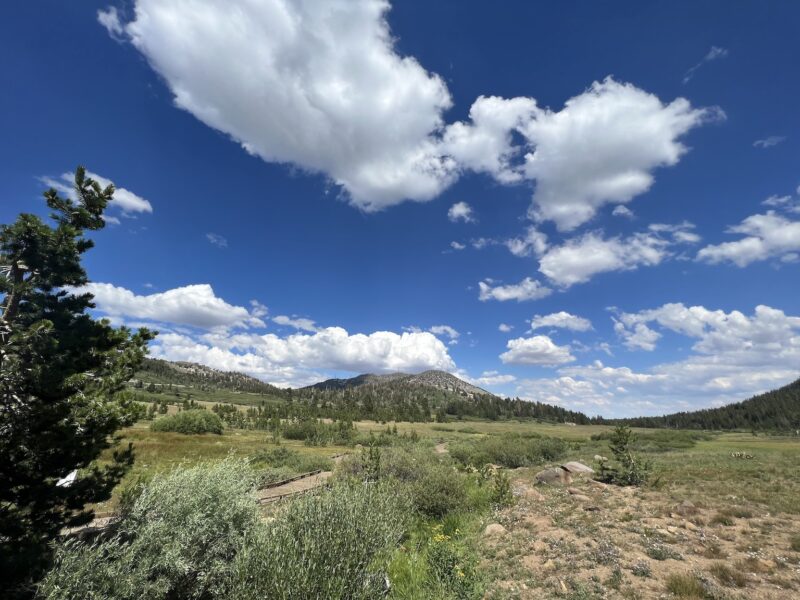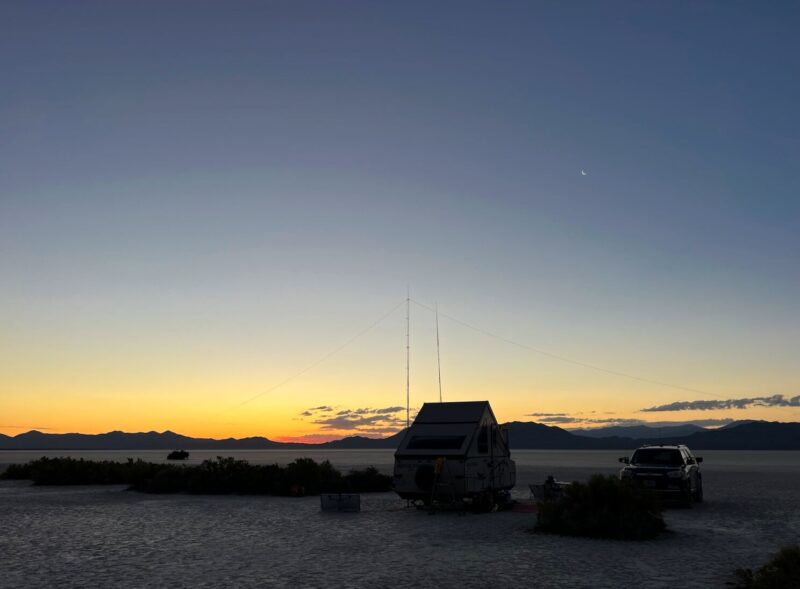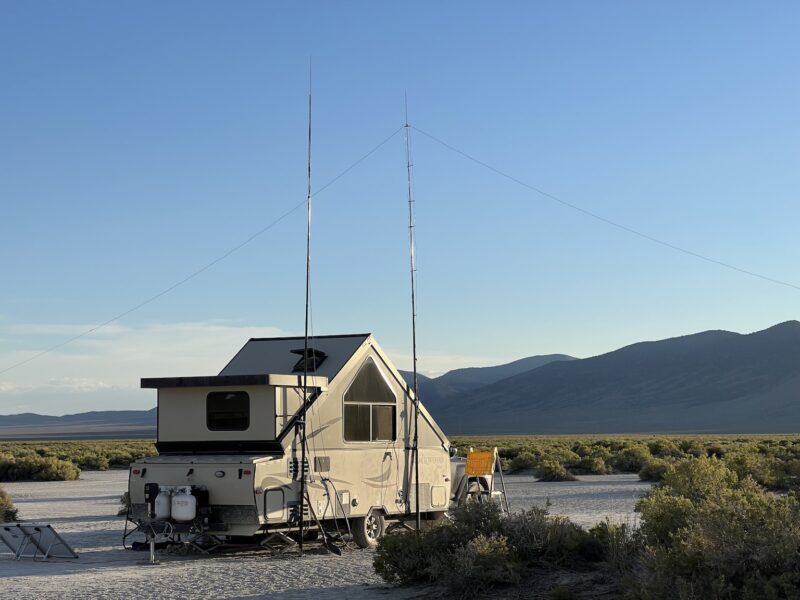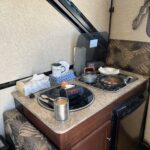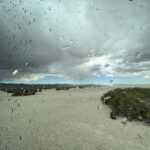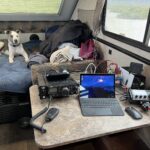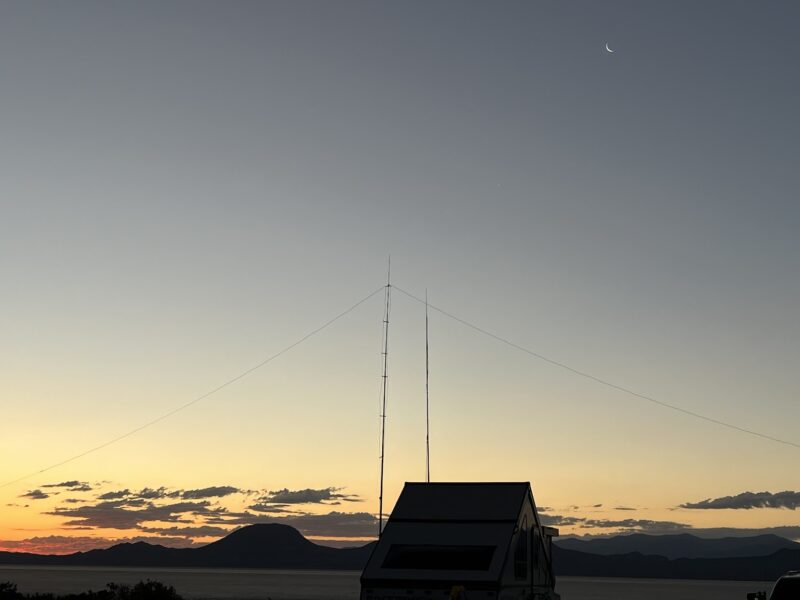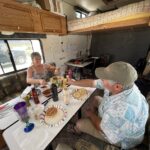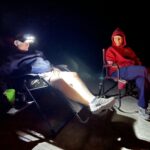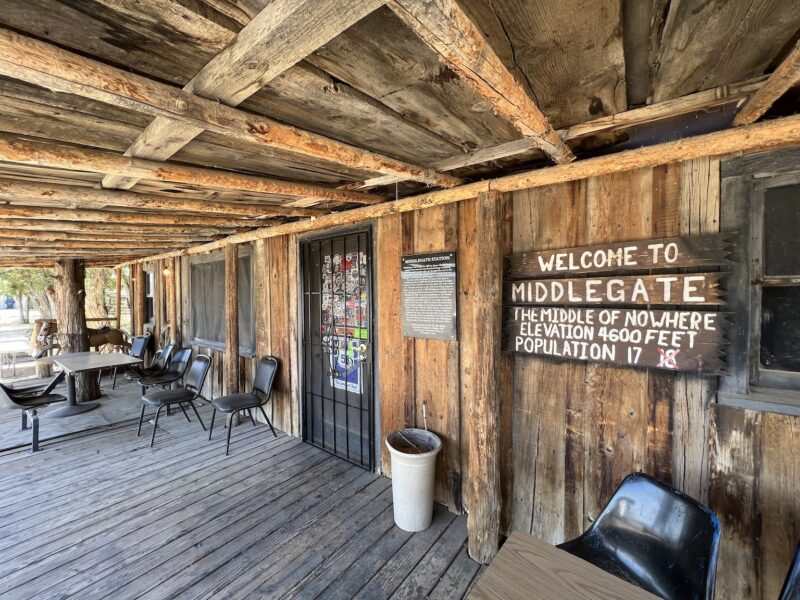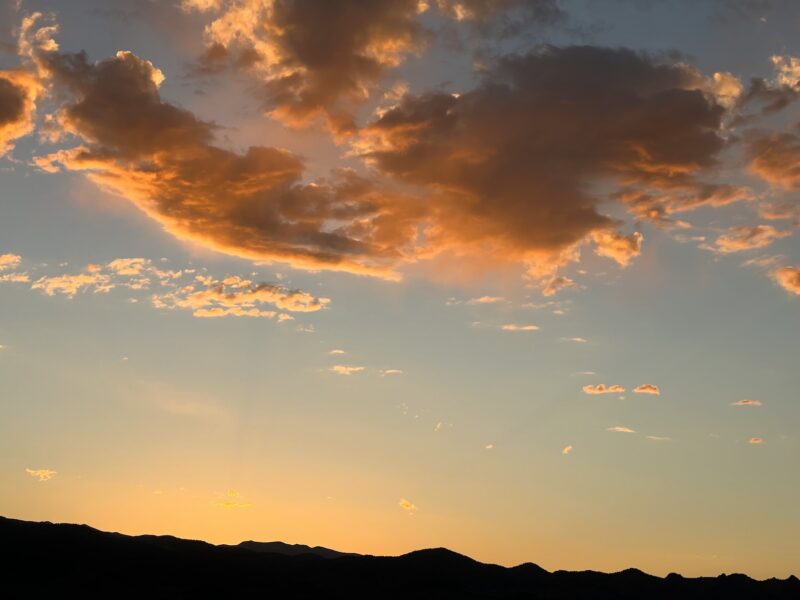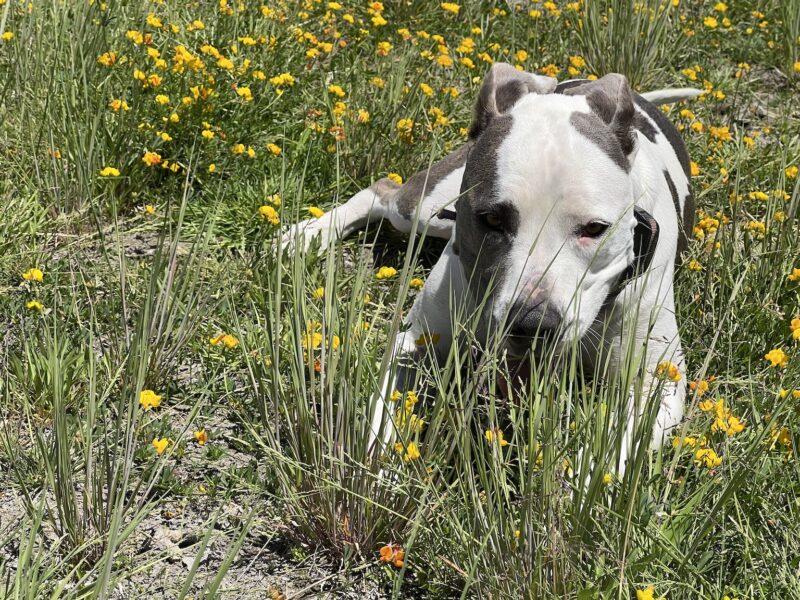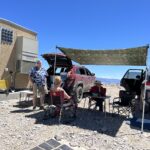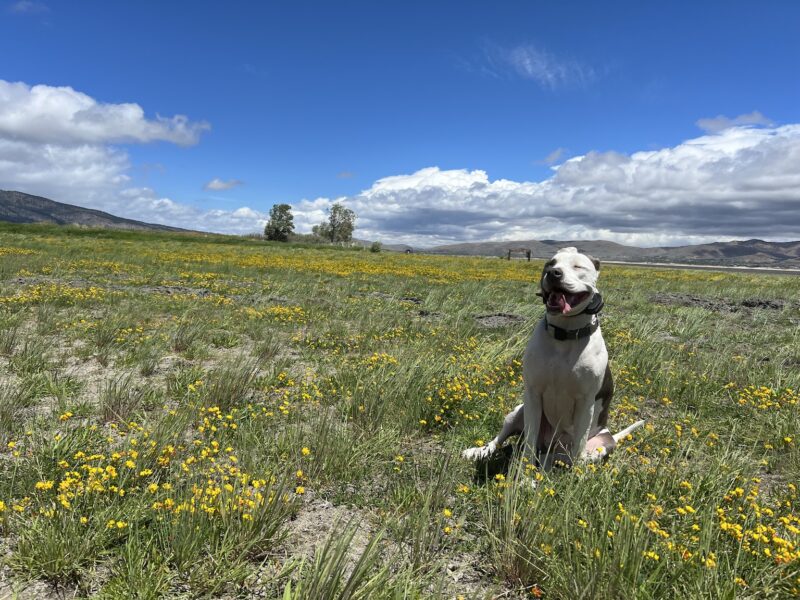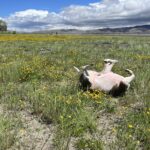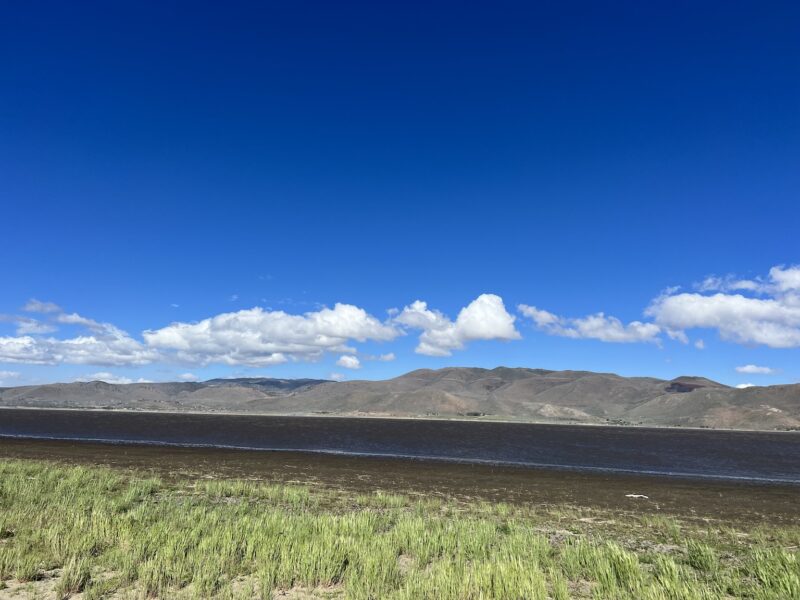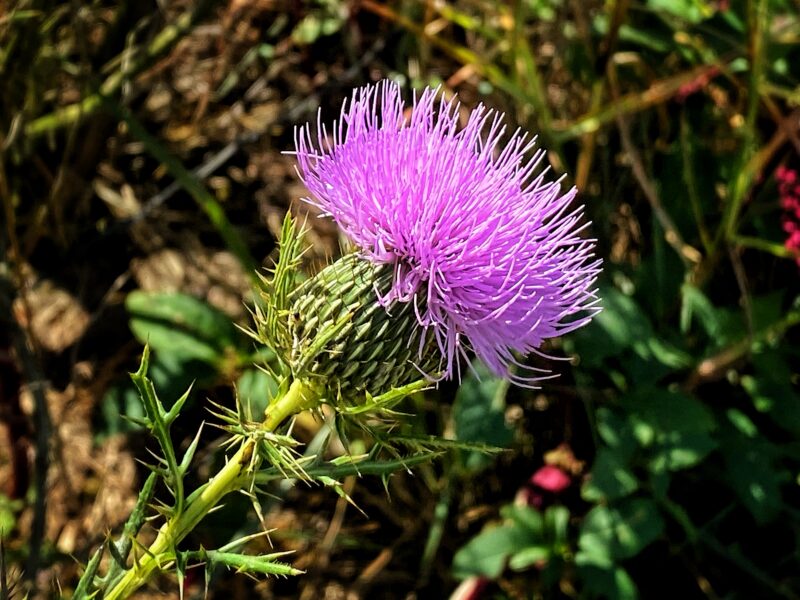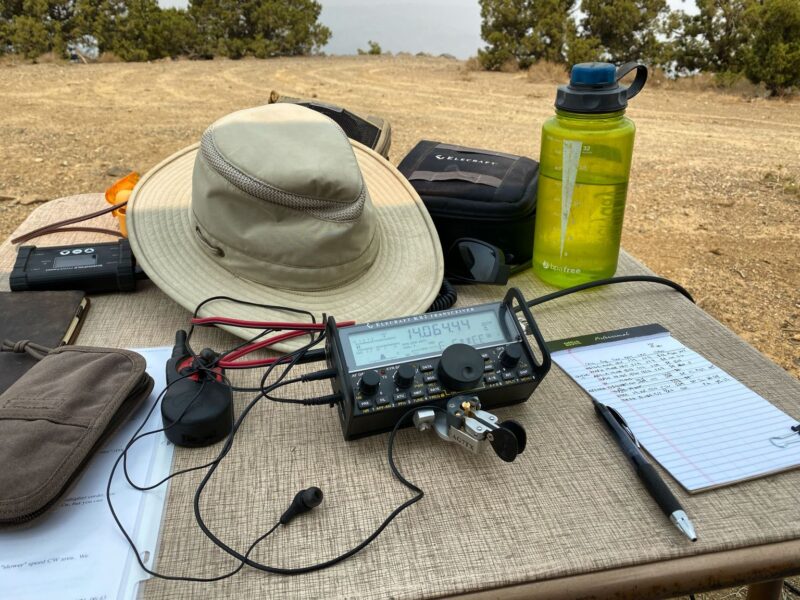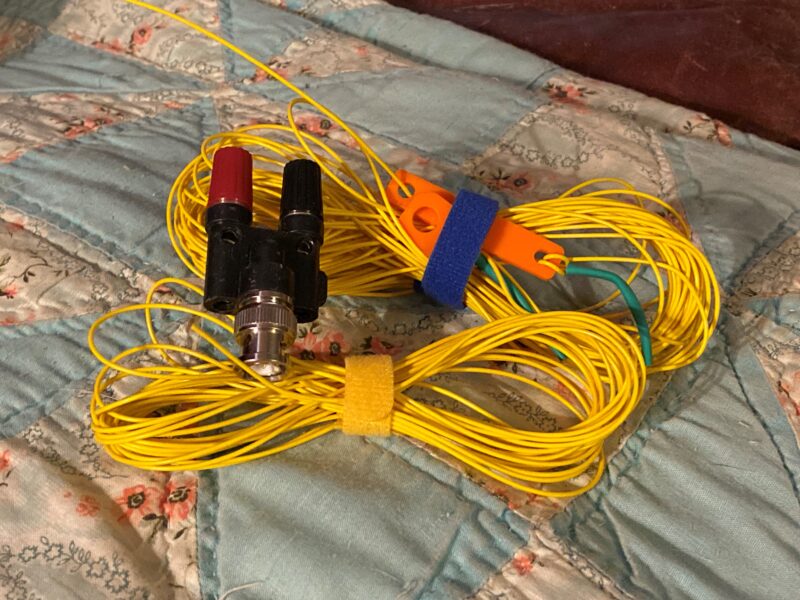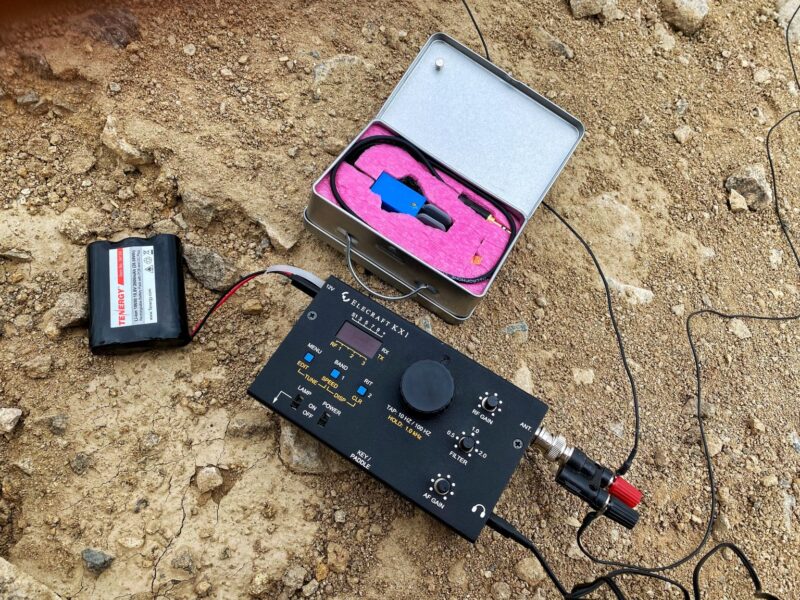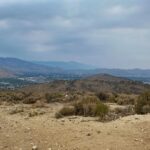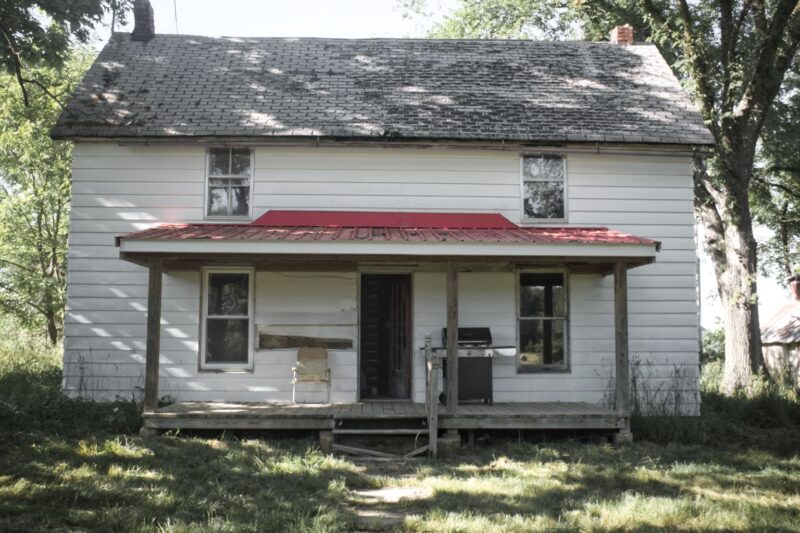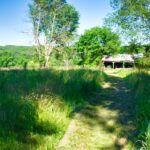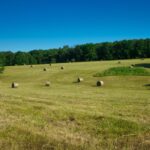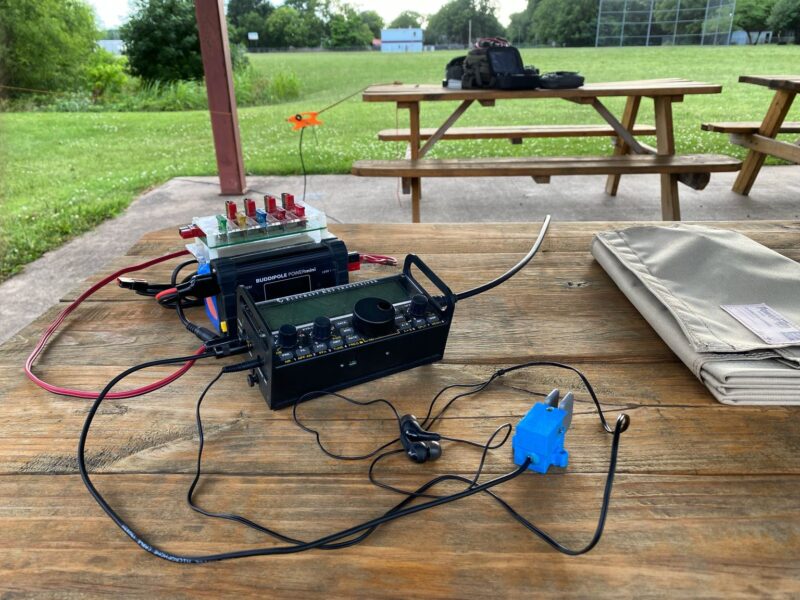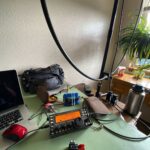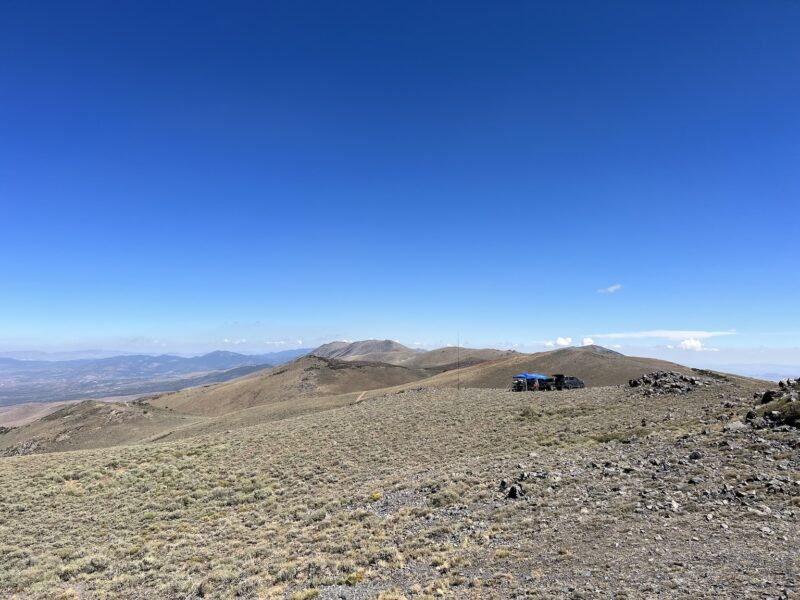
With a hat tip to Mr. Dickens, I offer an after-action report for two very different Summits on the Air (SOTA) activations. The first was an activation of Bald Mountain, W7N/TR-005 on Saturday 6 August 2022. The second was an activation of Chickadee Ridge, W7N/WC-005 on Sunday 7 August 2022.
Bald Mountain, W7N/TR-005:
Last week I was fairly busy, once again. I knew that I wanted to get out for some radio play on the weekend, but had not decided what to do. So, I waffled.
I think it was Thursday that I received an email from my friend Greg that there was a Summits on the Air (SOTA) activity for Saturday. He wanted a piece of the action and was considering activating Prison Hill. Prison Hill is easy access from our home and there are several good places to setup a station (and more).
But, I already activated Prison Hill this year, so there would be no points for me. I suggested another of the peaks we were thinking about and we started looking around a bit more. Eventually we settled on W7N/TR-005 — Bald Mountain that is an hour or so south of us.
We quickly planned a route to the site. The area around the peak looked reasonably level, enough so that we could put up shade and run a full-power station. Greg planned to bring a grill and grill hamburgers for lunch. Of course, there would be wine and treats as well.
As arranged, I picked up Diana and we stopped at the McD’s to pick up some breakfast sandwiches. We then made the short drive to Greg’s Place. I called Mike on the SNARS repeater system and they were headed south from Reno to meet us. They were a half-hour out, so I knew I had plenty of time to make the trip.
We hit Greg’s Place about 0700h and they were in the front, finishing their loadout. We passed out the breakfast sandwiches about the time that the rest of our party pulled up.
We chatted a bit while finishing food and everyone had a chance to love on Sera. We then mounted up, did a radio check, and headed out.
Greg had a route loaded into his GPSr (and so did I). He had me take lead and we headed south on US 395. He called the turn off, but I missed it. He called again that it was blocked and I missed the second turn off. But there was a big pullout area on the right, so I pulled off the highway, paused, and turned around. The second turn off point for the track was open.
We turned east there.
I stayed in the lead as we passed through a burned area. I think it was burned two-years ago. The trees were still burned-out trunks, but the grasses were beginning to return. The road had some puddles from the recent showers (we’ve been in a monsoon pattern for a week or two now). The trail was not bad and not too steep. There were a few stretches where the trail had washed out. But the firefighters left a path adjacent to the trail and we had no trouble working our way up to the summit.
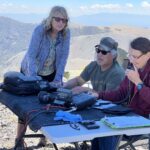
After a short confab, we chose a site within the activation zone, parked the rigs, and began to deploy our equipment. The two EZ-ups went first and were secured. Tables were setup and a group of us began assembling the DX Commander antenna. It was the second time I setup this antenna, with the first being when I helped Greg assemble it and cut the antenna wires a couple of years ago. So there was a bit of scrambling to get all the parts together in the right order. Eventually we got it together and Greg checked it.
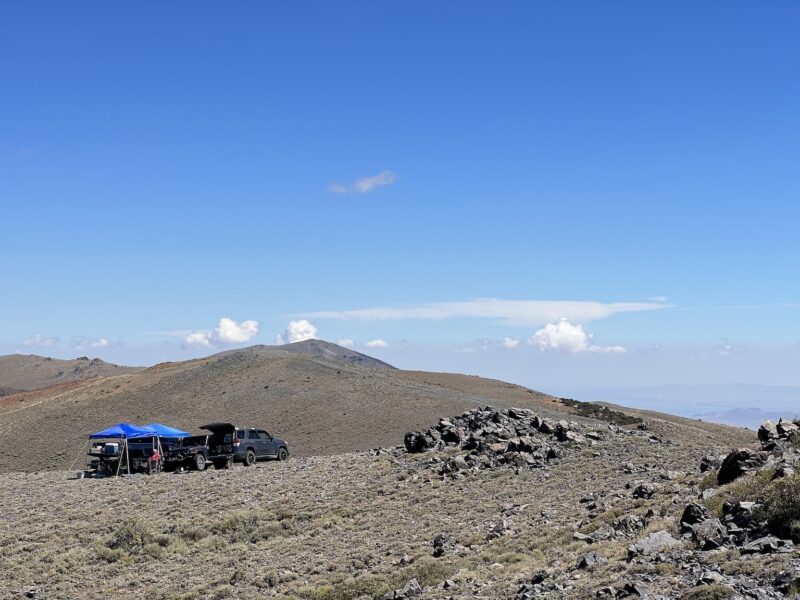
We complied with the SOTA rules in that our station was independent of the vehicles and carried to the operating point. SOTA is intended to be inclusive. So, although drive-ups are permitted, they are not particularly encouraged. Yet, we were within the rules.
I consider this kind of SOTA operation as a GLOTA expedition — GLamour SOTA, which includes shade, food, wine, and lots of chairs.
I let the other operators play a long time. I sat in the sun (it was cool at 9,000ft) with a cover on and kept track of Sera. She is a tenderfoot and I need to keep an eye on her or she will wander off or start running in pursuit of a critter. I do not want another foot injury. I do not want her to get lost. We were not far from the shepherd’s camp and he had several border collies with him.
There were lots of good reasons to keep Sera close. So, I did.
After most of the others made their contacts, I took a turn at the Icom 7000. Greg found an adapter for my key. We figured out how to set the power and character speed. I started making my call and logging the contacts as they were made.
The bands were pretty busy and I needed a narrow filter. Greg helped me find it on his rig. That made signal copy a bit easier.
I recall one caller I just could not copy. I sat back in my chair and exclaimed “I can’t copy this!!!!!” Everyone looked at me.
One asked “Are we too noisy?”
“No… the code is so poorly formed I can’t make it out.”
The group looked relieved, but quieted down. I continued working on the call and eventually got it. The operator must have been using a straight key and the characters were poorly formed. There are a lot of reasons this might be the case, including a lot of physical reasons. In any event, the exchange was completed and logged.
The other operators finished lunch and made a few more contacts. Greg took another turn at the radio and completed his activation.
“You want another run at it?” he asked me.
“Sure, I’ll do a little more.” So I did. I made about 25 contacts, using 25w to 50w of power and a radio I did not know.
We chatted for a bit longer in the group. One memory that stands out is the group talking about my sending. The characters form patterns, which we learn to recognize in groups of characters, just like we learn words. One of them was singing some of the characters in my sidetone. It was interesting to listen to them as I sent out my call.
It was time to tear down and head home. With so many hands, this did not take long. The trip down was not bad and we got some more photographs along the way.
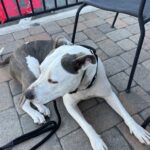
On the way into Carson, Diana asked “Do you want a snack?”
I thought about it for a moment, then decided that an early (not very much, really) supper was in order. We chatted a couple of minutes about potentials.
“Let’s do Francisco’s. The Tacos de asada are very good and you will probably like them.”
Also, there is a patio where Sera is welcome. I want her to practice her place and being able to ignore the traffic and hustle/bustle when out and about.
I am always reminded of my time in Bolivia. The city of Tarija is typical of third-world cities, where the sewers are combined. That is, the underground sewers convey both sewage and storm-water runoff. There is a wet well for a grinder pump near the Francisco’s patio. The occasional waft of sewer gas can be smelled.
Some people might be offended by it. It is not strong and simply serves as a reminder of my time in Bolivia. I also smile when I hear the pump turn on and I get a drift of that smell.
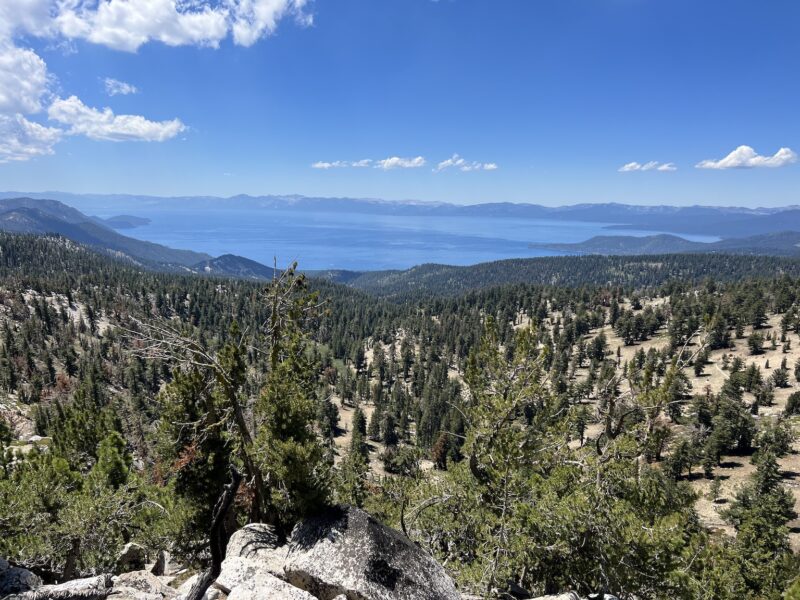
Chickadee Ridge, W7N/WC-005:
I rested well Saturday night. When I woke Sunday morning, I was not ready for the weekend to be over. I was also thinking about the afternoon, when the heat would rise and it would be warm in the house. Plus I just wanted to get out and away from the norm.
I decided to do another summit. I chose a summit and not a park because I wanted the cool of elevation. In addition, I wanted a bit of a physical challenge to test myself.
I chose W7N/WC-005, Chickadee Ridge, as my target. I plotted a route from the staging area at Tahoe Meadows to the summit (and back). With the route loaded into the GPSr, I grabbed my pack, refilled the Camelbak and bottles, checked the contents, and loaded Sera into the rig.
We headed out. I stopped at Maverick to top off the fuel tank and grab a breakfast sandwich and something for lunch. Then, on the way north, I called Young Son and chatted with him a bit.
Once I turned west on Mt. Rose highway, I told Young Son “I’ll probably lose you soon; I’m heading up the hill.” Sure enough, as we chatted, I dropped signal. I drove on in the quiet, Sera and I.
There was a lot of traffic Sunday morning. I guess folks were headed out from Reno for a drive or to spend the day up at Lake Tahoe. We soon crested the Mt. Rose summit and the staging area there was pretty full. It was only a couple more miles to Tahoe Meadows and the staging area for our hike.
There was no room on the south side of the highway. So I parked on the north side, knowing that it meant we would cross the highway. I do not care for that much, but sometimes it is necessary.
During the trip through the twisties, I heard something slide in the back of the rig. I thought it was probably my lunch but thought no more about it. Then, at the staging area, while Sera chirped and trilled in her excitement to get out, I could not find my lunch! Search as I might, my sandwich was missing.
I put the Elecraft KX2, an antenna, and the six-meter carbon fiber mast into my pack. I then set the GPSr to my trail, shared the map on Mapshare, and put Sera on leash. With the highway traffic and the foot traffic, she needed to be on-leash.
We crossed and headed south on the boardwalk through Tahoe Meadows to our trail. I have not hiked the Tahoe Ridge Trail, but from the mapping I thought the trail would not be too difficult and the climb at the hill would be doable. I did find one error in my track where I missed a loop in the trail. But that was not too bad.
There was enough traffic that I kept Sera on-lead most of the way out on the trail. I decided to sidehill up to a saddle between Chickadee Ridge and an unnamed peak. I was able to release her from the lead and she ran about the hill hunting chipmunks.
I looked at the map on my GPSr and then the hillside… boulders. I decided to start up the slope and it was a boulder climb. I am glad that I wear my pack regularly — a lot of hikers do not wear a pack regularly and are unaccustomed to the change in balance that the pack causes. This might have been a problem for me as I scrambled over the boulders. But, because of my practice, it was not.
The climb was not overly difficult, but was a challenge for me. That is a good thing. It also made me think I chose the wrong route. Sera paused a couple of times, but with a little encouragement she climbed right up.
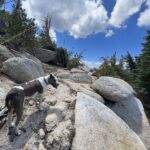
I put her in the shade of a boulder and sat down at the radio. I was able to check in to the 40m Noon Net on phone. The station was working.
I started calling CQ on 40m phone. I made several contacts, including some summits. I also had a nice short chat with a couple of other operators. Then I switched to CW mode and continued calling. I worked a few summits, then noticed my iPhone was hot and the screen was dimming.
It became more and more difficult to read the screen so I could log my contacts. I struggled for a bit, then set the phone aside and changed to the 30m band.
My intent was to work my up from 40m to 15m, calling on by phone and CW modes as I went. It was early enough in the afternoon that I had time. My overheating phone, though, was a problem. I did not have ready access to an alternate log.
I picked up my iPhone again and worked a station on 30m. It was hard copy with his signal dropping into the noise and then back up again with the QSB (fading). When I completed that call, I could barely read the iPhone’s screen.
In frustration, I decided to call it. I had enough contacts for my activation. I decided to post myself done (QRT) after the phone cooled off. I started to put away the station.
When I picked up the KX2, it was hot! It was not hot enough for it to shut itself down, but it was warmer than I wanted to handle. I think it was a good thing to stop.
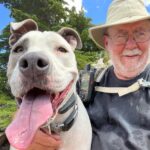
I was right. The path north was all DG with a few boulders that were easily bypassed. The route was steep and would not be an easy climb. But it was a better route than boulder scrambling.
At the saddle, we paused and Sera permitted me to make a selfie of us. She was still focused on chipmunks more than she was on me. That is OK.
We had a little more of the steeper slope to get down to the trail. That was not too bad. A woman with a young Golden Retriever was on the trail. The dog barked at us, then ran partway up the slope toward us, despite the calls of its handler.
Sera was perfect, staying next to me (although on-lead), although focused on the other dog. It eventually broke off and returned to its handler.
We continued down the trail until we arrived back at Ophir Creek. There I had The Girl get into the water to cool off and get a drink. She puttered about, splashing and sniffing until a group of people walked up. I put her back on lead and we headed to the rig.
When we got there, I wondered about my sandwich. I decided to check one more time.
There, in the side pocket of the door, was my sandwich. It had slid off the deck into the side pocket. Me, not expecting it to be there, looked everywhere else.
I started to rig to get the air conditioner running. Then I gobbled my sandwich. I was hungry. I did save a bite for Sera, though, which she also munched. I think she was hungry too.
The trip home was uneventful. I arrived home tired and sore. I knew I would be more sore in a couple of days. I was right.
Lessons learned:
- I must have a way to shade my equipment. I have to pick a shaded spot or bring something to make shade.
- My iPhone is a great logging tool. HAMRS has templates for both SOTA and POTA. That makes uploading my contacts trivial. However, I need a backup for those cases where the iPhone fails. In this case, the iPhone got too hot and turned off the screen to reduce current use.
- I need to pay more attention to my routing. I made a small error on the trail. I made a bigger error on my choice of route up the side of the hill. It worked out alright in this case, but in a different case I might have been faced with a climb I could not do.
- When I heard something slide around in the back of the rig, I should have checked the side pockets of the rear doors. If I had on this trip, I would have had my sandwich with me on the hilltop. That would have improved my outlook on the situation — food always helps.
- The latter lesson is also a lesson to expect the unexpected. I could not have known the sandwich slid into the side pocket of the door. It did. I looked everywhere but there. My lesson — pay attention.
- I elected to test myself physically on Sunday by hiking the summit. (It was not driveable anyway.) I learned that I can do a four-mile hike with elevation. I might be slow. I might be tired. I might be sore. But, when I returned to the rig, I was not spent. I had reserves and could have done more. It was OK that I did not, but it is also good to know that I could.
- When operating in a group environment, headphones or earbuds are appropriate. They would not have helped my copy of the poor code. They would certainly have helped keep the background chatter, which was completely understandable and normal, reduced so I could focus more on the signal.
I really like POTA and SOTA activations. I am outside. It is away from my normal environment, which can be a distraction (and often is). I can get cooler if I go higher.
It was a good weekend.
